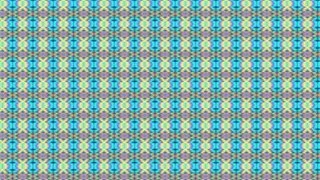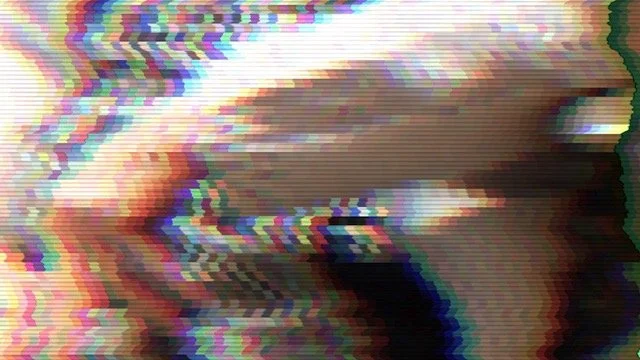The intimacy of exchange that occurs between people using textiles is central and how film might provide a reflexive means through which to critically reflect on the tactile process of making.
Brenda Miller's practice draws on aspects of everyday life for its focus. Day-to-day existence is precious and society ought to celebrate and value it. Memories and nostalgia form a kind of romanticism for place and space, which is integral to the work.
Being able to look at the sea and horizon every day as a child has evolved into a fascination with the memory of vistas seen on a daily basis. Early morning scenes when the mist means it is only possible to see halfway across a field to magical horizons where the clouds mingle with the land to form imaginary landscapes.
Through linking the everyday to familiar domestic activities, Brenda Miller references women's heritage. In turn this motivates the necessity to include textiles within the practice as she feels it is a fundamental part of women's cultural history.
practice
Brenda Miller's practice draws on aspects of everyday life for its focus. Day-to-day existence is precious and society ought to celebrate and value it. Memories and nostalgia form a kind of romanticism for place and space, which is integral to the work.
Being able to look at the sea and horizon every day as a child has evolved into a fascination with the memory of vistas seen on a daily basis. Early morning scenes when the mist means it is only possible to see halfway across a field to magical horizons where the clouds mingle with the land to form imaginary landscapes.
Stephen Holl explains that: “The horizon is not only an optical condition but also a spinning moment in space-time.”
Through spending time in the landscape, Brenda Miller is endeavouring to explore her relationship to the liminal space at the horizon. Brenda Miller's research has drawn inspiration from the picture by Caspar David Friedrich, ‘Wanderer Above the Sea of Fog’ as a starting point.
The project Knitted Horizons has its origin firmly routed in the landscape of the Cotswolds. It is referencing a historical connection to the woollen industry, which has now virtually disappeared. The memory of the painting has been processed into a relic of that encounter into the practice.
Through linking the everyday to familiar domestic activities, Brenda Miller references women's heritage. In turn this motivates the necessity to include textiles within the practice as she feels it is a fundamental part of women's cultural history. Although textiles continue to be problematic with its connection to suppression and hobbies as highlighted by Ingrid Bachman: “Skills associated with textiles are still employed in the educational contexts of home and school to inculcate the male ideal of femininity in women. Sewing skills are still a source of exploitation of middle and lower class women. In the home sewing is regarded as a hobby while in the factory, it is viewed as industrial production - both activities, however, speak of submission to patriarchal values.”
Alongside this theme there is a romanticism and nostalgia evident in the film Sharon and Me. In this, Brenda Miller is drawing attention to the last remnants of the woollen industry while reflecting on the need to make and questioning the loss and use of skills. As society progresses, we make less and less as Daniel Charmy reflects: “Almost all of us can make. It is one of the strongest of human impulses and one of the most significant means of human expression. Yet fewer and fewer people know how to make the things they use, need or want, or even how these things are made.”
Curator, Karen MacDonald's review of Mapping the Future:Where are you now? at The Brewhouse, Feb 2012 comments: 'The only direct representation of the human form, Brenda Miller's self portrait photograph 'Knitting', was taken on a hillside looking towards a horizon which, as she points out, is a construction dependent on your own viewpoint. A camping chair surrounded by in-process knitting seemed to invite the viewer to sit and share the illusion, from their position as hero of their own personally crafted narrative.'
Through linking the everyday to familiar domestic activities, Brenda Miller references women’s heritage. In turn this motivates the necessity to include textiles with the practice as she feels it is a fundamental part of women’s cultural history. Although textiles continue to be problematic with its connection to suppression and hobbies, as highlighted by Ingrid Bachman: Skills associated with textiles are still employed in the educational contexts of home and school to inculcate the male ideal of femininity in women. Sewing skills are still a source of exploitation of middle and lower class women. In the home sewing is regarded as a hobby while in the factory, it is viewed as industrial production – both activities, however, speak of submission to patriarchal values. (2)
Based in Gloucestershire, graduated in Creative Textiles at Bath Spa University in 1996 and received her MFA in Art Practice in 2009 from Goldsmiths College, University of London and PhD at The University of Wolverhampton.
Brenda’s moving image, textiles and installation have been shown in the UK, Europe and USA. Brenda explores the historical representation of art through textiles, its links to craft and domesticity and its relationship to current practice - while collaborating with both professional and amateur women to create documentary style films. The intimacy of exchange that occurs between people working with textiles is central to her research which proposed that film might provide a reflexive means through which to critically reflect on the tactile process of making (alone and/or with others).
biography / filmography
Having always stitched and knitted since childhood, my passion for textiles expanded when I started on a part time creative embroidery course, then a Creative Arts degree at Bath Spa in the 1990s. My interests gradually moved towards a more collaborative practice and a more dialogical practice began to emerge. Lazy Daisies, my first collaborative 18 piece, was exhibited as an installation of ten thousand hand embroidered flowers. This work was shown in a variety of locations including the Eden Project (2003), at Fresh Air Sculpture (2004) and at Under-the-Edge Arts (2005). Contributions were made by people aged four to ninety-four years, and printed flowers were stitched by visitors and added during some of the events.
This project motivated me to study for a Fine Art Practice MFA at Goldsmiths, University of London, which I completed in 2009.
2025
PhD : Wolverhampton University : read thesis
2023
PhD exhibition at Wolverhampton University - Re-configured Conversations
2016
Triptychs 1 at the Huddersfield Media Centre - Walking
Madeira Short Film Festival 2016
Waiting Room 44AD, Bath
Experiments in Cinema v11.4 New Mexico
Short Cut, Brighton
WOFFF, Brighton 2016
2015
Alchemy Film and Moving Image Festival, Hawick, Scotland – April
Towards Stillness, 44AD, Bath – February
Composite Approaches, Stroud
Winnipeg Underground Film Festival
Stiwdio Maelor, Corris, N.Wales
Alchemy Film & Moving Image Festival, Scotland
2014
Viewpoints, Site Festival, Stroud – May
Experiments in Cinema v9.72, Albuquerque, New Mexico – April
Bornshorts, Bornholm, Denmark - September
2013
Mia, Pacadena, California – Moments in Time Screening
Haberdashery Exhibition Hebdon Bridge
Northwich Gallery Film Shorts
Inaugural ArtLacuna Film Festival, London
Opening Connections – curated artist films, Site Festival Stroud
National Electric Open, Congleton
BETWEEN_TIME, Meantime, Cheltenham
2012
Mapping the future: where are you now? The Brewhouse, Taunton
Residency - AA2A artist, Plymouth College of Art, Plymouth
2011
CAZ Square Eyes 3, The Basement, The Exchange, Penzance
2010
Always being photographed? : Project Space, SVA, John Street, Stroud, Glos
...not so fast, Octagon, Bath
middle, Southampton Film Week, Bargate Gallery, Southampton
Pembroke Open 2010, Joanna Field Gallery, Milford Haven
Worcester Open 2010, The Pitt, Worcester
2009
MFA, Goldsmiths 2009
Platform, Raymond Gun Gallery, 30 Vyner Street, London
Degree shows 2009 - MFA Art Practice, Goldsmiths College, University of London, New Cross Gate, London
2005
Lazy Daisies installed at Under-the-Edge Arts
2004
Lazy Daisies installed at Fresh Air Sculpture
2003
Lazy Daisies installed at Eden Project
thesis
An examination of handtextile practice within commercial, artistic and digital contexts reconfigured through visible mending.
Item Type : Thesis or dissertation
Authors : Miller, Brenda
Citation : Miller, B. (2025) An examination of handtextile practice within commercial, artistic and digital contexts reconfigured through visible mending. University of Wolverhampton.
https:// wlv.openrepository.com/handle/2436/625873
Publisher : University of Wolverhampton
Hidden work carried out by women in this practice-based study examines connections between hand skills in current practice through darning and mending to re-configure moving image and textile artifacts. This research adopts an auto ethnographic and practice-based methodology prioritising a willingness to share, references John Roberts’ (2007) concepts of de-skilling and re-skilling and applies Richard Sennett’s (2012) concepts of differentiating exchange and definitions of repair to develop textile practice and experimental moving image through visible mending methodologies as outcomes.






